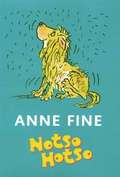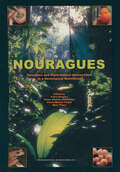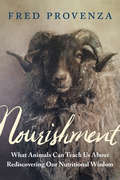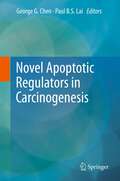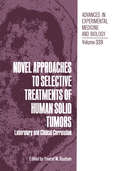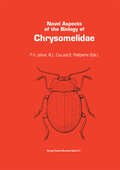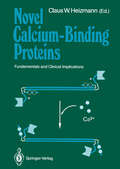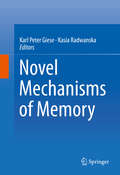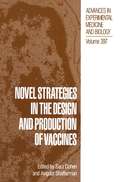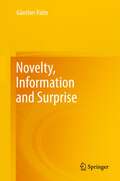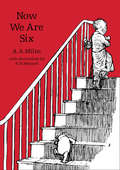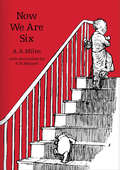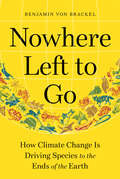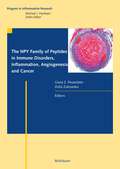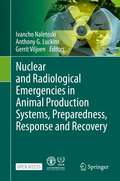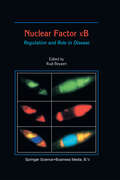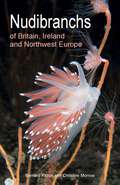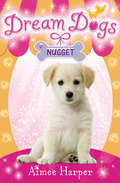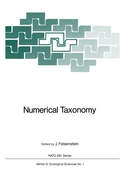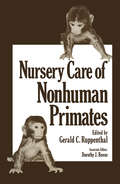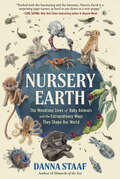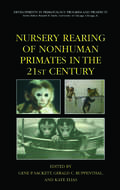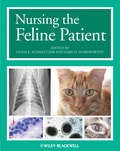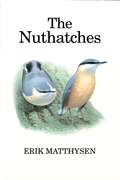- Table View
- List View
Notso Hotso
by Anne Fine Tony RossIt's a dog's life for Anthony. Not only is he lacking the respect he deserves from the neighbourhood dogs and cats, but suddenly all he can do is scratch, scratch, scratch. And now bits of him are dropping off - yeuch! Just when Anthony thinks things can't get any worse, he finds himself on the vet's table. What she has in mind is about to destroy the tiny shred of street cred he has left...
Nouragues: Dynamics and Plant-Animal Interactions in a Neotropical Rainforest (Monographiae Biologicae #80)
by F. Bongers P. Charles-Dominique P. M. Forget Marc ThéryNouragues is a tropical forest research station in French Guiana. It was established in 1986 for research on natural mechanisms of forest regeneration. Since then a lot of research has been done on this and related topics. This book provides an overview of the main research results, and focuses on plant communities, vertebrate communities and evolutionary ecology, frugivory and seed dispersal, and forest dynamics and recruitment. The appendices give (annoted) checklists of plants, birds, mammals, herpetofauna and fishes found in the same area.
Nourishment: What Animals Can Teach Us about Rediscovering Our Nutritional Wisdom
by Fred ProvenzaReflections on feeding body and spirit in a world of change Animal scientists have long considered domestic livestock to be too dumb to know how to eat right, but the lifetime research of animal behaviorist Fred Provenza and his colleagues has debunked this myth. Their work shows that when given a choice of natural foods, livestock have an astoundingly refined palate, nibbling through the day on as many as fifty kinds of grasses, forbs, and shrubs to meet their nutritional needs with remarkable precision. In Nourishment Provenza presents his thesis of the wisdom body, a wisdom that links flavor-feedback relationships at a cellular level with biochemically rich foods to meet the body’s nutritional and medicinal needs. Provenza explores the fascinating complexity of these relationships as he raises and answers thought-provoking questions about what we can learn from animals about nutritional wisdom. What kinds of memories form the basis for how herbivores, and humans, recognize foods? Can a body develop nutritional and medicinal memories in utero and early in life? Do humans still possess the wisdom to select nourishing diets? Or, has that ability been hijacked by nutritional “authorities”? Consumers eager for a “quick fix” have empowered the multibillion-dollar-a-year supplement industry, but is taking supplements and enriching and fortifying foods helping us, or is it hurting us? On a broader scale Provenza explores the relationships among facets of complex, poorly understood, ever-changing ecological, social, and economic systems in light of an unpredictable future. To what degree do we lose contact with life-sustaining energies when the foods we eat come from anywhere but where we live? To what degree do we lose the mythological relationship that links us physically and spiritually with Mother Earth who nurtures our lives? Provenza’s paradigm-changing exploration of these questions has implications that could vastly improve our health through a simple change in the way we view our relationships with the plants and animals we eat. Our health could be improved by eating biochemically rich foods and by creating cultures that know how to combine foods into meals that nourish and satiate. Provenza contends the voices of “authority” disconnect most people from a personal search to discover the inner wisdom that can nourish body and spirit. That journey means embracing wonder and uncertainty and avoiding illusions of stability and control as we dine on a planet in a universe bent on consuming itself.
Novel Apoptotic Regulators in Carcinogenesis
by George G. Chen and Paul B. S. LaiOur recent understanding of the cellular and molecular defects and the regulation of the apoptotic signalling pathways has resulted in rationally designed anticancer strategies and the development of novel agents that regulates apoptosis. A comprehensive review of all apoptotic-related anticancer therapies is not the purpose of this book. However, in the volume of this book with 11 chapters, we have described a number of novel apoptotic regulators that have shown promising value and also great feasibility for cancer treatment. These novel agents either occur naturally or are chemically synthesized. While we are excited about the discovery and development of these novel apoptotic regulators as potential anticancer agents, a degree of caution should be always borne in mind when interpreting the success of preclinical pro-apoptotic candidates since potential problems inevitably lie ahead. These problems usually include target specificity, unanticipated toxicity, compound stability, formulation issues, pharmacokinetic and pharmacodynamic profiles. Nevertheless, we believe that this collection of 11 chapters by established leaders in the area of apoptosis will be of great interest to not only academics working in the field of cancer research and apoptosis but also pharmaceutical and pharmacological industries that . We are looking forward to the further development to push these potential agents toward clinical stage.
Novel Approaches to Selective Treatments of Human Solid Tumors: Laboratory and Clinical Correlation (Advances in Experimental Medicine and Biology #339)
by Youcef M. RustumNovel aspects of the biology of Chrysomelidae (Series Entomologica #50)
by Pierre H. Jolivet M. L. Cox E. PetitpierreNovel Calcium-Binding Proteins: Fundamentals and Clinical Implications
by Claus W. HeizmannA wide variety of hormones, neurotransmitters and growth factors exert their cellular effects by reacting first with membrane receptors resulting in an increase of intracellular calcium and the cellular response. The calcium signal in the cell is mediated by the high-affinity calcium binding proteins (characterized by the EF-hand structural element), and by the calcium and phospholipid dependent proteins. Many of these have been discovered most recently. Their purification, distribution, protein and gene structures as well as their physiological roles are discussed. The book is of interest to biochemists and molecular biologists as well as to clinicians and the pharmaceutical industry who can apply the results in this field.
Novel Mechanisms of Memory
by Karl Peter Giese Kasia RadwanskaThis book integrates discoveries from recent years to show the diversity of molecular mechanisms that contribute to memory consolidation, reconsolidation, extinction, and forgetting. It provides a special focus on the processes that govern functional and structural plasticity of dendritic spines. In nine chapters, new and important ideas related to learning and memory processes will be presented. Themes discussed include the role of AMPA receptors in memory, two signalling cascades involved in local spine remodelling and memory, the role of extracellular matrix proteins in memory, the regulation of gene expression and protein translation, and mechanisms of retrieval-induced memory modulation and forgetting. We believe that the study of these topics represents a great step toward understanding the complexity of the brain and the processes it governs.
Novel Strategies in the Design and Production of Vaccines (Advances in Experimental Medicine and Biology #397)
by Sara Cohen Avigdor ShaffermanVaccination is one of the most efficient and cost effective methods of promoting human health and has been in clinical use for at least 200 years. Nevertheless, infectious diseases continue to constitute a constant threat to the well being of humanity. Common pathogens, once believed to be under control, acquire increased virulence and resistance to drugs, while exotic microorganisms emerged from hidden reservoirs to cause yet incurable diseases in humans. These changes, together with epidemic outbreaks related to political and socio-economic instabilities, increase the needs for the development of new, advanced vaccines. In this volume, devoted to the proceedings of the 39th OHOLO Conference, we present some of the recent strategies for the design and production of novel vaccines. The advent of recombinant DNA technology has stimulated the production of several subunit vaccines. In spite of the obvious advantages to this approach, the limited immuno genicity of many subunit candidates has hindered their development. Strategies to enhance the immunogenicity of subunit vaccines is therefore critical. Several approaches toward this goal, including design of novel adjuvants and delivery systems as well as design of advantageous carriers, are presented here. Among the carriers evaluated here are polypep tides (flagellin, HBV core antigen, J3-galactosidase), attenuated virions (Vaccinia, Sindbis), and nonpathogenic licensed bacteria (Salmonella).
Novelty, Information and Surprise
by Günther PalmThe book offers a new approach to information theory that is more general then the classical approach by Shannon. The classical definition of information is given for an alphabet of symbols or for a set of mutually exclusive propositions (a partition of the probability space Ω) with corresponding probabilities adding up to 1. The new definition is given for an arbitrary cover of Ω, i.e. for a set of possibly overlapping propositions. The generalized information concept is called novelty and it is accompanied by two new concepts derived from it, designated as information and surprise, which describe "opposite" versions of novelty, information being related more to classical information theory and surprise being related more to the classical concept of statistical significance. In the discussion of these three concepts and their interrelations several properties or classes of covers are defined, which turn out to be lattices. The book also presents applications of these new concepts, mostly in statistics and in neuroscience.
Now We Are Six (Winnie-the-Pooh – Classic Editions)
by A. A. MilneBut now I am Six, I'm as clever as clever. So I think I'll be six now for ever and ever!' Curl up with Winnie-the-Pooh and Christopher Robin in A. A. Milne’s classic book of poetry for children, Now We Are Six.
Now We Are Six (Winnie-the-Pooh – Classic Editions)
by A. A. Milne“But now I am Six, I'm as clever as clever. So I think I'll be six now for ever and ever!” Curl up with Winnie-the-Pooh and Christopher Robin in A.A.Milne’s classic book of poetry for children, Now We Are Six.
Nowhere Left to Go: How Climate Change Is Driving Species to the Ends of the Earth
by Benjamin von BrackelHarrowing journeys of animals and plants—fleeing skyrocketing temperatures and mega-droughts—reported from the front lines of the biggest migration of species since the Ice Age
The NPY Family of Peptides in Immune Disorders, Inflammation, Angiogenesis, and Cancer (Progress in Inflammation Research)
by Zofia Zukowska Giora Z. FeuersteinRecent research indicates that the immune system and inflammatory reactions are governed and regulated by powerful neuronal mediators derived from the central and peripheral nervous system. The NPY family of peptides is a diverse group of neuropeptides that acts via multiple receptors, Y1-Y5, which are widespread not only in neurons but also in a variety of non-neural and immune cells. These peptides have been known as important regulators of many essential systems, such as blood pressure and cardiac function, food consumption and energy homeostasis. However, in recent years, they have also become recognized for their role as potent modulators of cell growth and immune functions with broad implications in chronic inflammatory diseases, cancer and angiogenesis.In this book, experts in the field analyze recent evidence supporting the role of NPY family of peptides in regulation of the immune/inflammatory system with special reference to its medical and therapeutic implications.
Nuclear and Radiological Emergencies in Animal Production Systems, Preparedness, Response and Recovery
by Gerrit Viljoen Ivancho Naletoski Anthony G. LuckinsThis Open Access volume explains how major nuclear and radiological emergencies (NREs) can have implications at local, national and international level. The response to NREs requires a competent decision-making structure, clear communication and effective information exchange. National veterinary services have the responsibility to plan, design and manage animal production system in their countries. These activities cover animal health, animal movement control, production control and improvement, and control of the products of animal origin before their placement on the market. Release of radionuclides after NREs can cause substantial contamination in the animal production systems. Critical responsibility of veterinary authorities is therefore to prevent such contamination, establish early response mechanisms to mitigate the consequences and prevent placement of contaminated products of animal origin on the market for human consumption. This work summarizes the critical technical points for effective management of NREs for national veterinary services.
Nuclear Factor кB: Regulation and Role in Disease
by R. BeyaertSeventeen years after its initial description, nuclear factor-KB (NF-KB) endures as one of the most studied transcription factors. NF-KB has attracted widespread interest based on the variety of stimuli that activate it, the diverse genes and bio logical responses that it controls, the striking evolutionary conservation of struc ture and function among species, and its involvement in a variety of human diseases. The biochemical basis by which several stimuli converge to activate NF-KB has been largely elucidated during recent years. While first discovered as a key regulatory factor of the immune system, NF-KB is now recognized as an important player in the functioning of many organs and cell types. The ongoing examination of NF-KB signaling has revealed its ever expanding role in immune and inflammatory responses, but also in cancer and development. For this reason, numerous efforts are underway to develop safe inhibitors of NF-KB to be used in the treatment of both chronic and acute disease situations. The present book is the first to review and synthesize our knowledge of this interesting transcription factor. As such, the choice of subjects to review was daunting. To set the stage, an introductory chapter on activators and target genes, as well as the role they play in several responses, has been included.
Nudibranchs of Britain, Ireland and Northwest Europe: Second Edition
by Bernard Picton Christine MorrowA strikingly illustrated photographic identification guide to sea slugs in all their colourful varietyNudibranchs, or sea slugs, are a group of marine gastropod molluscs whose adults lack shells, an evolutionary loss that has led to a wide variety of body shapes, colours and colour patterns, making them popular with divers and underwater photographers. In this book, experienced nudibranch experts Bernard Picton and Christine Morrow provide an accessible and authoritative photographic identification guide for anyone interested in finding and identifying nudibranchs in the coastal waters of Britain, Ireland and Northwest Europe.Covers more than 195 species, each on its own two-page spreadIncludes in situ photos to aid finding nudibranchs under water and on the shoreFeatures photos of nudibranchs’ distinctive spawn coils and studio photos showing detailed anatomyPresents key distinguishing features and essential information on size, habitat, diet and distribution
Nugget (Dream Dogs #3)
by Aimee HarperThe third exciting adventure from the animal series set in a glamorous pooch parlour, for animal-crazy girls who love dogs and looking after them.
Numerical Taxonomy (Nato ASI Subseries G: #1)
by Joseph FelsensteinThe NATO Advanced Study Institute on Numerical Taxonomy took place on the 4th - 16th of July, 1982, at the Kur- und Kongresshotel Residenz in Bad Windsheim, Federal Republic of Germany. This volume is the proceedings of that meeting, and contains papers by over two-thirds of the participants in the Institute. Numerical taxonomy has been attracting increased attention from systematists and evolutionary biologists. It is an area which has been marked by debate and conflict, sometimes bitter. Happily, this meeting took place in an atmosphere of "GemUtlichkeit", though scarcely of unanimity. I believe that these papers will show that there is an increased understanding by each taxonomic school of each others' positions. This augurs a period in which the debates become more concrete and specific. Let us hope that they take place in a scientific atmosphere which has occasionally been lacking in the past. Since the order of presentation of papers in the meeting was affected by time constraints, I have taken the liberty of rearranging them into a more coherent subject ordering. The first group of papers, taken from the opening and closing days of the meeting, debate philosophies of classification. The next two sections have papers on congruence, clustering and ordination. A notable concern of these participants is the comparison and testing of classifications. This has been missing from many previous discussions of numerical classification.
Nursery Care of Nonhuman Primates (Advances in Primatology)
by G. C. RuppenthalThe Infant Primate Research Laboratory at the University of Washington was conceived in 1970 as a small research Wlit primarily for support of two individual's interests in early develop ment of nonhuman primates. Because of their research emphasis, a modest nursery was required to support a small population of animals for specific experimental studies. The laboratory experi enced rapid growth when others at the University became interested in the use of monkeys as models for early development and mental retardation in humans. In 1972 the Wlit was formally established as a core facility of the Child Development and Mental Retardation Center and the Regional Primate Research Center. This joint administrative and financial support allowed us to invest considerable effort in the development of normative data for rearing animals in our nursery as well as for identifying, documenting, and rearing subjects at high risk for neonatal death. As part of that effort, every attempt has been made to promote a multidisciplinary approach to ques tions associated with rearing nonhuman primates. This volume includes much of the information thus gathered. I feel that such an approach is essential to the promotion of scientific principles in rearing and has allowed the laboratory to contribute to prima tology.
Nursery Earth: The Wondrous Lives of Baby Animals and the Extraordinary Ways They Shape Our World
by Danna StaafFrom the author of Monarchs of the Sea, a first-of-its-kind journey into the hidden world of baby animals—hailed as &“a gobsmacking delight!&” (Sy Montgomery, New York Times–bestselling author of The Soul of an Octopus) It&’s time to pay attention to baby animals. From egg to tadpole, chick to fledgling, they offer scientists a window into questions of immense importance: How do genes influence health? Which environmental factors support—or obstruct—life? Entire ecosystems rest on the shoulders (or tentacles, or jointed exoskeletons) of animal babies. At any given moment, babies represent the majority of animal life on Earth. In Nursery Earth, researcher Danna Staaf invites readers into the sibling (and, sometimes, clashing) fields of ecology and developmental biology. The tiny, hidden lives that these scientists study in the lab and in the wild reveal some of nature&’s strangest workings: A salamander embryo breathes with the help of algae inside its cells. The young grub of a Goliath beetle dwarfs its parents. The spotted beak of a parasitic baby bird tricks adults of other species into feeding it. Mouse embryos can absorb cancerous cell grafts—and develop into healthy adults. Our bias toward adult animals (not least because babies can be hard to find) means these wonders have long gone under-researched. But for all kinds of animals, if we overlook their babies, we miss out on the most fascinating—and consequential—time in the lives of their species. Nursery Earth makes the case that these young creatures are not just beings in progress but beings in their own right. And our planet needs them all: the maggots as much as the kittens!
Nursery Rearing of Nonhuman Primates in the 21st Century (Developments in Primatology: Progress and Prospects)
by Gene P. Sackett Gerald Ruppenthal Kate EliasNursery Rearing of Nonhuman Primates in the 21st Century describes how and why nursery rearing of primates can produce adaptable juveniles and adults for research, conservation, and display-educational purposes. The volume details the history of nursery rearing since the mid-19th century, the outcomes of varied nursery rearing methods, the contemporary goals of nursery rearing as well as reference data derived from species commonly reared in nursery or hand-feeding situations. Examples of the changing goals of nursery rearing covered in this volume are the need for biological containment in disease research, the production of specific pathogen-free colonies by removal of neonates from the mother, the production of phenotypes for genetic and molecular biology studies, and the breeding of endangered species for conservation or research purposes.
Nursing the Feline Patient
by Linda E. SchmeltzerNursing the Feline Patient is a comprehensive and accessible clinical manual addressing the unique nursing needs of cats. Covering all aspects of feline nursing care from the examination room to the surgical suite, the book highlights the special considerations for cat patients throughout. Written specifically for veterinary technicians and nurses, topics range from restraint, preventative care, and laboratory procedures to surgery, dentistry, and specific diseases of concern. Carefully designed for easy reference, chapters are logically organized into sections on patient management, diagnostics, surgery and recovery, and major diseases by body system. Each chapter begins with an overview of the anatomy and physiology required for a full understanding of the disease. Nursing the Feline Patient is an essential resource for veterinary technicians working with feline patients.
Nursing the Feline Patient
by Linda E. Schmeltzer Gary D. NorsworthyNursing the Feline Patient is a comprehensive and accessible clinical manual addressing the unique nursing needs of cats. Covering all aspects of feline nursing care from the examination room to the surgical suite, the book highlights the special considerations for cat patients throughout. Written specifically for veterinary technicians and nurses, topics range from restraint, preventative care, and laboratory procedures to surgery, dentistry, and specific diseases of concern. Carefully designed for easy reference, chapters are logically organized into sections on patient management, diagnostics, surgery and recovery, and major diseases by body system. Each chapter begins with an overview of the anatomy and physiology required for a full understanding of the disease. Nursing the Feline Patient is an essential resource for veterinary technicians working with feline patients.
The Nuthatches (Poyser Monographs #131)
by Erik Matthysen David QuinnThe Nuthatches is based on the European Nuthatch, with comparative information on the other west Paleartic and world species. Comparisons with other nuthatch species provide general perspectives on biological species separation problems. Features: * Comparative information on the other west Paleartic and world species * Provides general perspectives on biological species separation problems
